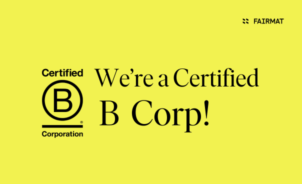Fun fact: In her article, Tara Bernoville pointed out that in 2006, Carbon neutral was the word of the year in the New Oxford American Dictionary, overthrowing the runners-up — ‘elbow bump’ and ‘ghostriding.’
So, what does carbon neutral mean?
We know what neutrality is, right? Neither negative nor positive.
So for carbon to remain neutral on this planet, we must remove as much as we add.
According to the European Parliament’s definition, “carbon neutrality, or having a net zero carbon footprint, refers to achieving net zero carbon emissions by balancing a measured amount of carbon released with an equivalent amount sequestered.”
Definition breakdown:
Adding carbon: + Carbon dioxide (CO2) emissions from human activities.
Removing carbon: – CO2 sequestration by carbon sinks.
Net = 0
Carbon sequestration by carbon sinks refers to the systems that absorb more carbon than they emit — such as forests, vegetation, soils, and oceans that capture and store (sequester) atmospheric carbon dioxide.
Currently, no artificial carbon sinks are able to effectively remove carbon from the atmosphere at the required scale.
In 2020, global fossil CO2 emissions, luckily, took a back seat due to the pandemic. But the levels were restored in 2021 at 37.8 Gt when things returned to normal, as per EDGAR’s 2022 Report.
But CO2 is not the only contributor, and other gases (greenhouse gases) such as methane and nitrous oxide are significant contributors to the changing global climate patterns.
What will you find in this article?
- The basic concepts: carbon neutrality, climate neutrality, greenhouse gasses, and their impact on the climate.
- And, what steps can companies take to become carbon neutral?
Carbon Neutrality v/s Climate Neutrality?
Often used interchangeably, ‘carbon neutral’ and ‘climate neutral’ have different meanings.
Carbon neutrality refers to having a net-zero carbon footprint by balancing carbon dioxide emissions.
On the other hand, climate neutrality encompasses all greenhouse gas emissions (as explained in detail below) and not just carbon dioxide.
It is not always relevant for companies, or in fact, some sectors, to target carbon neutrality. For example, approximately 1/3rd of the global anthropogenic (associated with human activity) methane emissions come from the energy sector.
Companies (or sectors) should choose to become carbon or climate neutral and communicate accordingly.
What are Greenhouse gasses (GHGs)?
GHGs are the gases without whom the earth would be quite chilly (avg. temperature -18°C).
Fortunately, this is not the case because of the Greenhouse effect. As these atmospheric gasses trap and re-emit infrared energy (heat from the sun) back to the earth’s surface, thus making it habitable.
While this phenomenon is natural, it is changing rapidly and unnaturally with increased concentrations of greenhouse gasses being produced by human activities.
Carbon dioxide (CO2), which enters the atmosphere by burning of fossil fuels (coal, natural gas, and oil), waste, etc., accounts for about 79% of total greenhouse gas emissions. Other greenhouse gasses are methane, nitrous oxide, hydrofluorocarbons, etc.
As reported by IPCC, methane’s global warming potential (GWP) is even more significant than carbon. The impact of 1 tonne of methane can be considered equivalent to 28 to 36 tonnes of CO2 over a span of 100 years.
But looking at the bigger picture, these marginal GHGs account for only 20% of global warming’s impact compared to carbon dioxide.
Therefore it is both practical and urgent to start where we need it the most currently — carbon dioxide.
4 Steps to become Carbon Neutral
It’ll take far-reaching, immediate transitions in all key sectors: energy, transport, or industry, along with changes in our own lifestyles to balance the carbon dioxide (CO2) levels.
The European Commission’s Green Deal targets to reduce emissions by 50% by 2030 and aims to make Europe climate neutral by 2050. EU plans to achieve it through its Fit for 55 in 2030 package (a set of proposals to revise and update EU legislation).
The US also rejoined the Paris Agreement in 2021, committing to lower carbon emissions. Climate Change Act, 2008 of the UK also aims to achieve net-zero emissions by 2050.
(Learn more about the EU’s tools: ETS, CBAM, etc., for achieving the Green Deal objectives.)
However, alongside rigorous regulations, carbon neutrality efforts should be supported by economic resources, technological tools, infrastructure, etc., to help the most polluting industries reduce their carbon emissions.
Many organizations have already set targets to get a carbon-neutral status — which they can achieve by taking the following steps:
- Measure
- Reduce
- Offset
- Communicate
Let’s walk through the steps:
Step 1: Measure the Carbon Footprint
- The first step is to understand where we stand today.
- Carbon footprint of a company accounts for both — direct GHG emissions and indirect emissions. It is expressed in carbon dioxide equivalent (CO2e).
- Scope 1 emissions (direct emissions) are the GHGs from the sources owned or controlled by the company. For example, emissions from the manufacturing of the goods.
- Scope 2 and Scope 3 are indirect emissions from energy and other indirect sources. Using electricity, steam, heating, and cooling generates GHG emissions and falls on the company’s share of the carbon footprint. The company is also responsible for the emissions from outsourced activities or employee commutes.
- To measure the carbon footprint, the total amount of GHG emissions of all the operations (production, energy usage, waste disposal, etc.) in the company should be calculated.
- Companies without a tangible product have energy consumption or logistics as the biggest source of GHGs. While companies with a physical product will have to consider measuring the footprint at all levels of the supply chain.
- In our case, we calculated the carbon footprint of both our service and products over their entire life cycle to obtain accurate results.
(Learn more about Fairmat’s journey to measure its impact on the environment).
Step 2: Carbon Reduction
- After understanding the carbon sources and carbon levels in your company, effective measures can be taken to reduce the said emissions.
- Reducing carbon plans should ideally vary for every company, depending on their location, industry, and size. The best course of action is to identify and line up the most impactful approaches and put them into practice.
- Reusing the waste generated or recycling it are sustainable approaches to reduce the company’s carbon footprint substantially.
(Read about how Decathlon partnered with Fairmat to develop a range of sports equipment (KUIKMA padel rackets) made from recycled carbon fiber composites.)
- Increasing the use of renewable energy sources, limiting energy consumption, and switching to low-carbon transportation are a few other common emission reduction strategies.
- Additionally, choosing sustainable suppliers and distributors can make a bigger eventual difference downstream.
Step 3: Carbon Offsetting
- GHGs occur everywhere in the atmosphere, and it does not matter where and by whom they are exactly being reduced. Carbon offsetting is essentially compensating for the emissions that occur elsewhere.
- A “carbon offset credit” is a financial instrument issued by the authorities. It represents an emission reduction (or sequestration) of one metric tonne of CO2 (or equivalent GHGs).
- It is transferable and can be used (or retired) or purchased to claim the reduction towards one’s own GHG reduction goals. Reforestation initiatives, waste management, etc., are examples of credit issuance for carbon offsetting.
- Businesses should reduce their greenhouse gas emissions by implementing the strategies mentioned in the steps above, and the remaining emissions can be offset or purchased by using carbon credits.
Step 4: Communication
- Communicating about your company’s carbon neutrality measures can help other emerging businesses to take inspiration.
- Conducting a Simplified Life Cycle Assessment (LCA) has helped Fairmat build rapport with the community and establish credibility with the stakeholders.
We documented our journey of measuring the environmental impact of our services and products. Request Fairmat’s Simplified LCA Report to learn more.




